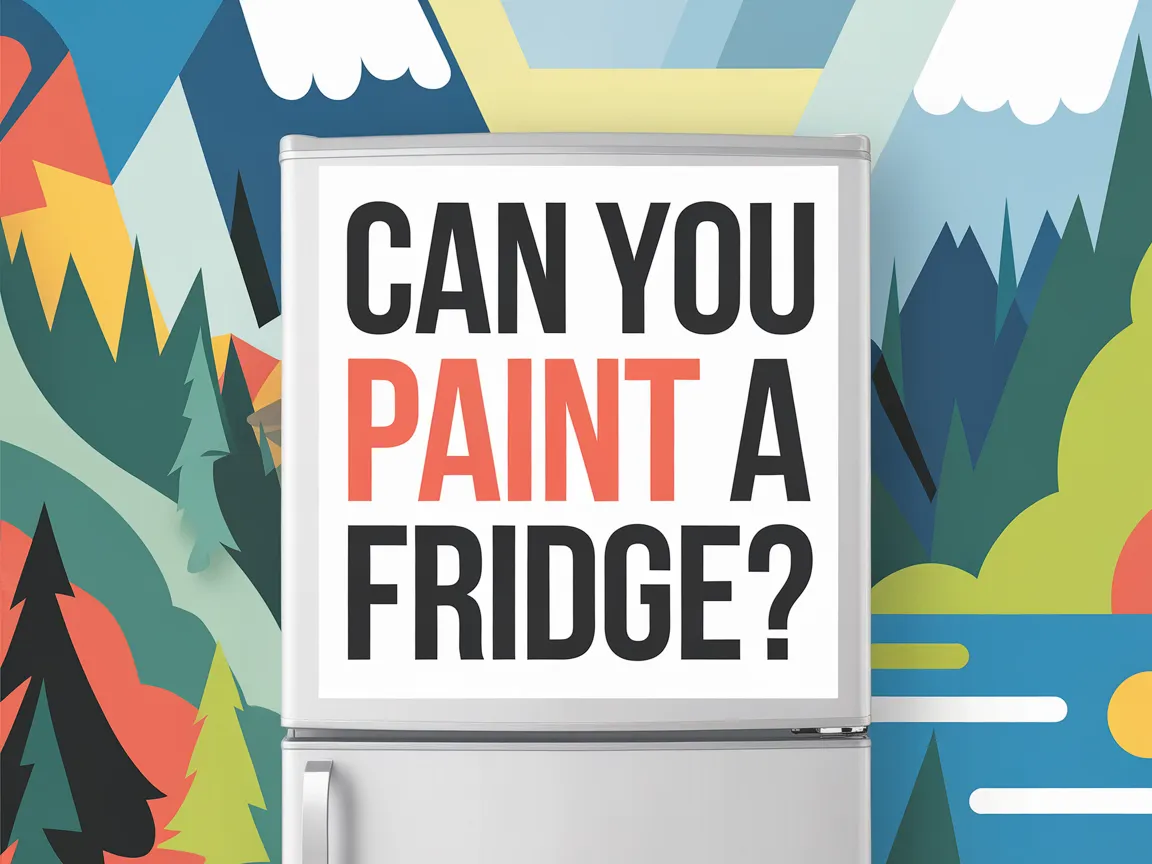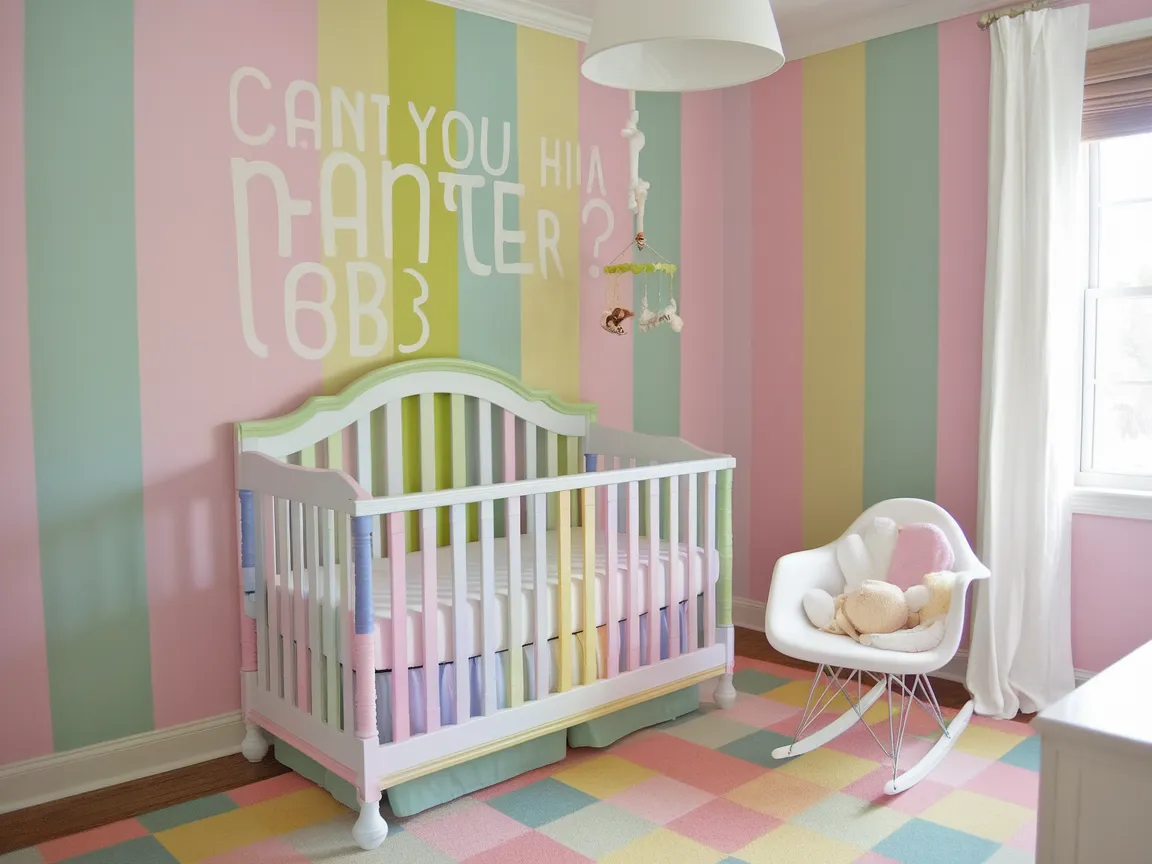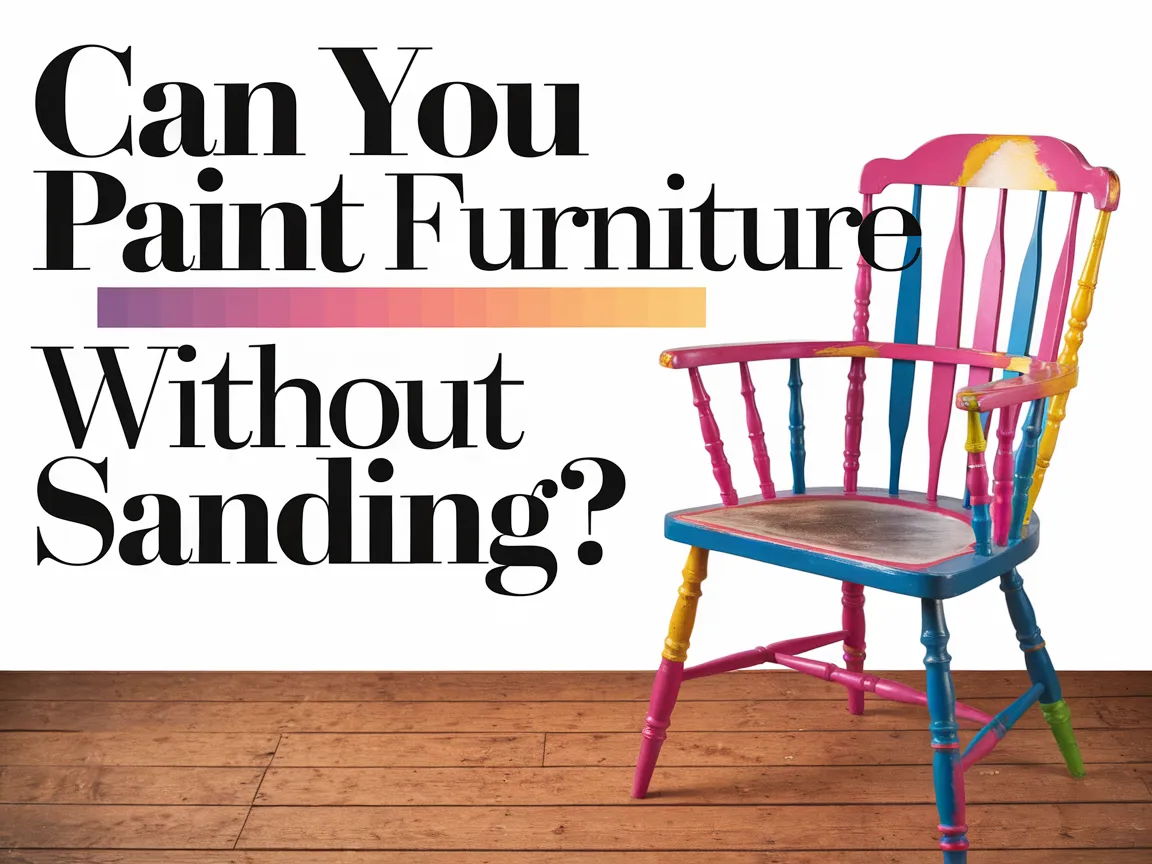Can You Paint Pressboard Cabinets?
Published on: April 21, 2025 | Last Updated: January 7, 2025
Written By: Alisha Winters
Pressboard cabinets are made from pieces of wood that are glued together and then pressed into sheets, kind of like a giant puzzle. Think of them as lightweight furniture that looks good but isn’t solid wood.
When you ask, painting interior surfaces, it’s vital to know what you’re getting into. I once tried painting my old pressboard cabinets without proper prep, and let’s just say, it didn’t turn out great!
In this guide, I’ll discuss essential considerations before you start painting, step-by-step instructions, color recommendations, types of paint suitable for cabinets, and tips for overcoming common issues. You’ll learn what type of paint to use for cabinets, how many gallons of paint to paint kitchen cabinets, and much more!
Contents
- 1 Can You Paint Pressboard Cabinets?
- 2 What Are Pressboard Cabinets?
- 3 Essential Considerations Before You Start Painting Pressboard Cabinets
- 4 Step-by-step Guide to Painting Pressboard Cabinets
- 5 Different Types Of Paint Suitable for Pressboard Cabinets
- 6 Factors Affecting the Success Of Painting Pressboard Cabinets
- 7 Common Issues When Painting Pressboard Cabinets
- 8 Finishing Touches for Your Painted Pressboard Cabinets
- 9 Tips for Ensuring a Smooth Finish on Pressboard Cabinets
- 10 Understanding the Finish Options for Painted Pressboard Cabinets
- 11 Benefits of Painting Pressboard Cabinets
- 12 Common Mistakes to Avoid When Painting Pressboard Cabinets
- 13 Long-Term Maintenance Tips for Painted Pressboard Cabinets
- 14 Frequently Asked Questions About Painting Pressboard Cabinets
- 15 Conclusion: Transforming Pressboard Cabinets With Paint
- 16 Additional Resources
Can You Paint Pressboard Cabinets?
Yes, you can paint pressboard cabinets. First, clean and sand them for better adhesion. Use a primer designed for laminate surfaces, then apply a durable paint. If you’re considering updating other surfaces like exterior siding, painting aluminum siding offers similar transformation. This process revitalizes your cabinets and gives them a fresh look!
What Are Pressboard Cabinets?
Pressboard cabinets are made from compressed wood fibers and adhesives, creating a solid, durable structure. They typically have a density of about 600 to 800 kg/m³ (37 to 50 Lb/ft³), making them a lightweight yet resilient storage option.
You’ve probably wondered if you can paint pressboard cabinets. From personal experience, I can say they can be transformed with the right prep and paint. It’s crucial to ensure proper adhesion and select the right type of paint. If you want to explore advanced painting techniques for different surfaces, painting specialized materials requires precision.
I once used pressboard cabinets in my DIY project space. They were functional but lacked character. If you choose to refresh them, know that gloss or satin paints work wonders; they cover well and resist moisture. Using the right primer is essential—it can dramatically affect the final finish.
Essential Considerations Before You Start Painting Pressboard Cabinets
What do you need to prepare for?
- High-Quality Primer: A product like KILZ Adhesion Primer is essential. It ensures the paint sticks to non-porous surfaces like pressboard.
- Latex or Acrylic Paint: Use paint such as Benjamin Moore Advance. It’s durable and easy to clean up, making it ideal for cabinets.
- Good Brushes or Rollers: Quality tools like Purdy Colossus Brushes help achieve a smooth application, reducing roller marks.
- Sanding Block: A 220-grit sandpaper block is crucial for roughening smooth surfaces, ensuring proper paint adhesion.
- Drop Cloths and Painter’s Tape: Products like Frog Tape protect areas you don’t want to paint, simplifying cleanup.
We covered key factors, preparation steps, and tools for painting pressboard cabinets here. We will now cover a step-by-step guide.
Also See: Where Are Painted Ladies in San Francisco? Find Them Here
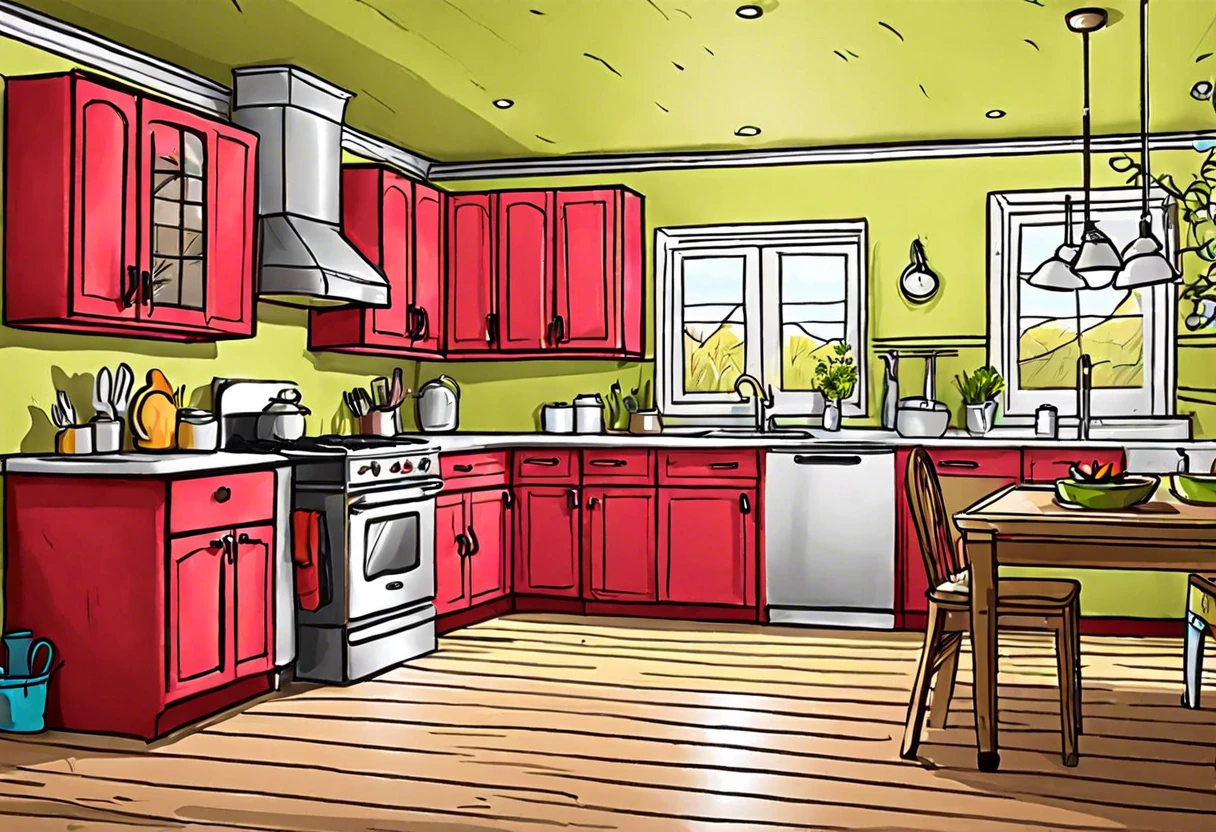
Step-by-step Guide to Painting Pressboard Cabinets
This guide covers the steps to effectively paint pressboard cabinets for a fresh look.
-
Preparation: Cleaning and Drying
Wipe down your cabinets with a mild detergent and water solution. Remove all grease and dust; otherwise, you risk a messy finish.
After cleaning, let your cabinets dry completely. Wait at least one hour to ensure no moisture lingers, which could ruin your paint job.
-
Sanding the Surface
Sanding creates a smooth surface for paint adherence. Use medium-grit sandpaper (Around 120 Grit) to lightly scuff the cabinets; avoid deep scratches for a smooth finish.
Wipe down the sanded cabinet with a damp cloth to remove dust. A clean surface maximizes your paint’s effectiveness.
-
Applying Primer
Apply a primer specifically made for laminate surfaces, like Zinsser BIN or KILZ. This step enhances your paint’s durability by ensuring it bonds effectively to the surface.
Use a foam roller for smooth application. I recommend two coats if you’re painting a lighter color over a dark one for better coverage.
-
Choosing the Right Paint
Select a paint suitable for cabinetry—preferably latex or acrylic enamel. These finishes resist scratches and should ideally be semi-gloss or satin for a polished appearance.
Choose a high-quality brush to prevent brush strokes. A 2.5-inch angled brush works best for detailed areas.
-
Painting the Cabinets
Start applying paint from the inside edges. Use smooth, even strokes and work in manageable sections to maintain a wet edge, which prevents overlap marks.
Let one coat dry completely before applying the next—typically 2-4 hours. If you’re using durable paint, consider three coats for a showroom-quality finish.
-
Sealing the Finish
Once your paint is dry, seal it with a clear polyurethane or similar product. This protects your new surface from moisture and wear.
Use a light microfiber pad to avoid bubbles; apply thin layers. Ideally, three coats will give you the durability you want while preventing chipping.
We have now covered a step-by-step approach to painting pressboard cabinets. Next, we will explore suitable paint types for them.
Different Types Of Paint Suitable for Pressboard Cabinets
Let’s look at the types of paint you can use: Latex, Oil-Based, Chalk Paint, and Spray Paint.
-
Latex Paint
Latex paint, which is water-based and easy to clean, adheres well to pressboard. It dries in about 1-2 hours but takes 24 hours for a full cure.
-
Oil-based Paint
Oil-based paint provides durability and a beautiful finish but takes longer to dry (Up to 8 Hours). It works well on cabinets but requires mineral spirits for cleanup.
-
Chalk Paint
This type offers a matte finish and needs minimal prep work. Chalk paint can be sealed with wax or polyurethane and dries within 1 hour.
-
Spray Paint
If speed’s your goal, spray paint’s your best option. You’ll need 1-3 cans (About 400 Ml Each) for a complete set of cabinets, usually drying in about 30 minutes.
This reminds me of a valuable lesson I learned when I chose chalk paint for my first furniture project. It was forgiving and easy to blend, making the learning curve smoother.
So far we covered the various paint types ideal for pressboard cabinets. Let’s look at the factors influencing successful painting next.
Factors Affecting the Success Of Painting Pressboard Cabinets
So, what factors impact your decision to repaint those pressboard cabinets?
-
Quality of primer: A good primer helps paint adhere to pressboard.
-
Type of paint: Using the right type, like acrylic, ensures a durable finish.
-
Surface preparation: Sanding and cleaning create a smooth surface for paint adhesion.
-
Humidity and temperature: These conditions affect drying time and can cause uneven application.
So far we covered the elements influencing the successful painting of pressboard cabinets. Let’s look at common challenges faced during this process.
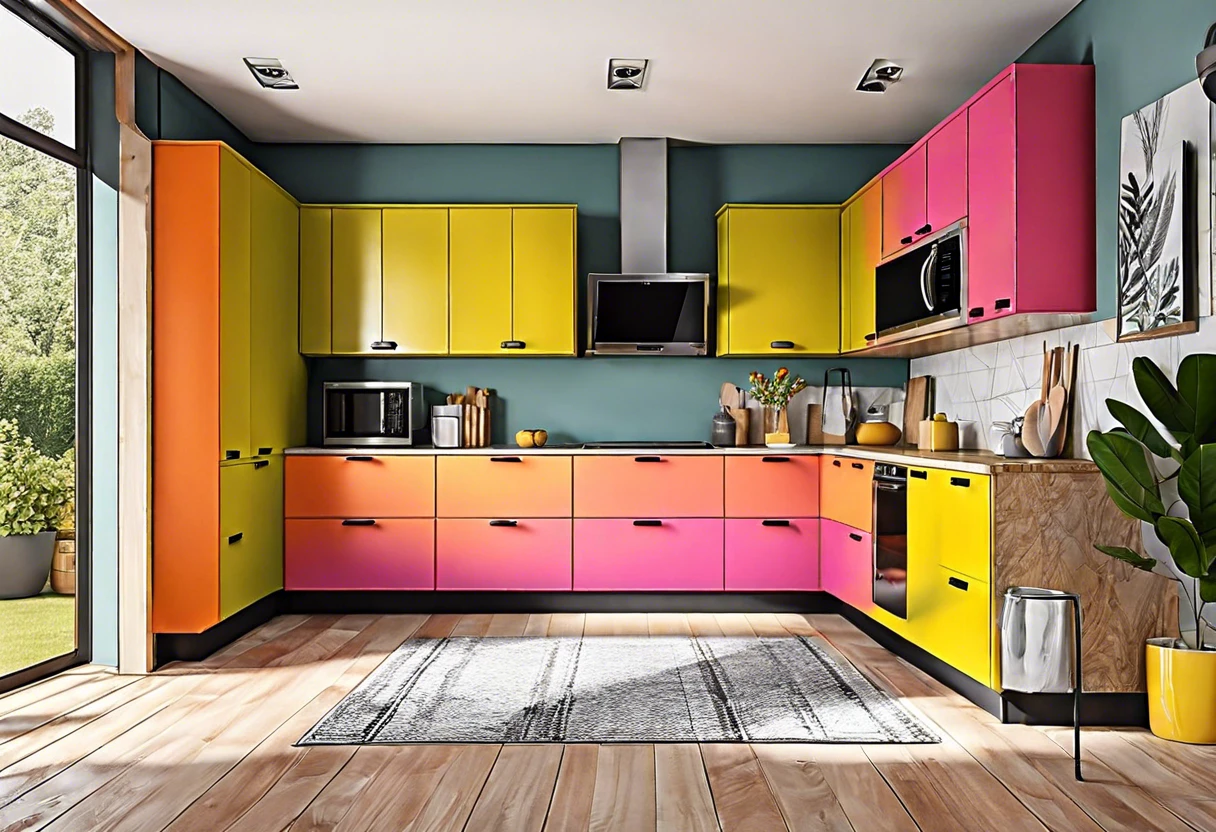
Common Issues When Painting Pressboard Cabinets
My friend tried painting her pressboard cabinets but faced peeling issues almost immediately. The spray paint didn’t adhere well, likely due to moisture trapped in the board.
To fix this, she should apply a quality primer designed for pressboard. A BONDING primer works best and can improve adhesion by over 200%. Using two gallons (7.57 L) ensures even coverage on these difficult surfaces.
Finishing Touches for Your Painted Pressboard Cabinets
After updating your pressboard cabinets, keep them glossy by applying a polyurethane sealer. A minimum of two coats ensures durable, water-resistant protection that lasts 5-7 years with normal use.
Inspect for bubbles or peeling at least 24 hours after the last coat. Use a magnifying glass to spot any rough areas, especially at seams—those need sanding or touch-up with a fine brush.
If you’re experienced, like me, choose professional-grade paints, such as Sherwin-Williams Emerald, which offers 30% more coverage (From 3.79 L [1 Gallon]) compared to standard options. That’ll save you time and materials!
Tips for Ensuring a Smooth Finish on Pressboard Cabinets
Want a flawless finish on your painted pressboard cabinets? Follow these expert tips to elevate your project.
-
Choose the Right Environment
Find a dry, dust-free space to paint. Ideally, the temperature should be between 50°F to 85°F (10°C to 29°C) for best adhesion and drying.
-
Use a Paint Conditioner
Mix your paint with a paint conditioner like Floetrol. This helps improve flow and reduces brush or roller marks, ensuring a smooth finish.
-
Apply Thin Coats
Go for thin coats instead of thick ones. Each coat should dry before applying the next—this helps avoid drips and uneven surfaces. 2-3 thin coats usually produce the best results!
Understanding the Finish Options for Painted Pressboard Cabinets
What finish do you want for your painted cabinets? Let’s break down the options available!
| Finish Type | Description | Best Uses |
|---|---|---|
| Matte | Flat finish that hides imperfections but is less durable. | Low-traffic areas, decorative pieces. |
| Satin | Slightly glossy, providing a soft sheen with moderate durability. | Kitchens, bathrooms, and high-traffic areas. |
| Gloss | Highly reflective finish that’s easy to clean but highlights flaws. | High-use surfaces, accent pieces. |
Benefits of Painting Pressboard Cabinets
Why should you consider painting your pressboard cabinets? Let’s break it down.
-
Cost-Effective Transformation
Painting is much cheaper than replacing cabinets. You can save hundreds or even thousands of dollars—typically around $100 to $300, compared to $1,000 for new cabinets!
-
Personalization
Painting allows you to inject your style. You can choose colors that match your home decor or create a unique look that reflects your personality.
-
Improved Aesthetics
A fresh paint job gives new life to old, worn-out cabinets. Instead of dated pressboard, you can achieve a modern, trendy appearance.
-
Enhanced Durability
Properly primed and painted cabinets can resist wear and tear, avoiding scratches and moisture issues. With quality paint, your cabinets can last longer and outshine their original look.
Common Mistakes to Avoid When Painting Pressboard Cabinets
Want to ensure your project goes smoothly? Avoid these pitfalls!
- Skipping Primer: Always use a good primer. Skipping this step can lead to peeling. A bonding primer boosts adhesion by over 200%!
- Using the Wrong Paint: Not all paint works well on pressboard. Stick to latex or acrylic for the best results.
- Improper Sanding: Don’t over-sand or under-sand. A light scuffing is all you need to create a good surface for the primer.
- Ignoring Drying Time: Patience is key. Let the primer and each coat of paint dry completely—this can take 24 hours for full curing.
Long-Term Maintenance Tips for Painted Pressboard Cabinets
How do you keep your painted cabinets looking new? Here are some tips!
- Regular Cleaning: Use a damp cloth and mild soap. Avoid harsh chemicals to maintain the paint quality.
- Avoid Excessive Moisture: Keep them dry. Use absorbent materials to wipe up spills immediately.
- Touch-ups: Keep a small amount of paint for touch-ups. This will help maintain uniformity if any areas get scratched.
Frequently Asked Questions About Painting Pressboard Cabinets
Can I Use Oil-based Paint for Pressboard Cabinets?
Yes, you can use oil-based paint for pressboard cabinets. Oil-based paints offer durability and a smooth finish, making them ideal for high-use areas. However, they have longer drying times—up to 8 hours—and strong fumes, so proper ventilation is essential.
How Long Does the Paint Take to Dry on Pressboard Cabinets?
How long does paint take to dry on pressboard cabinets? It typically dries to the touch in about 1 to 2 hours, but full curing can take up to 7 days. This is important if you plan to use the cabinets soon; make sure to allow extra time for a proper cure.
Can I Paint Pressboard Cabinets Without Priming?
No, you shouldn’t paint pressboard cabinets without priming. Priming helps seal the porous surface and increases paint adhesion. Skipping this step can cause peeling and flaking, leading to costly rework within weeks or months. If you’re dealing with stubborn existing paint, you might want to explore effective paint removal techniques.
What Tools Do I Need for Painting Pressboard Cabinets?
What tools do you need for painting pressboard cabinets? You’ll require a few essentials: a paint roller, brushes, sandpaper (220 Grit), a primer, and protective tape. Having these tools ready will streamline your process and ensure better results. If you’re considering painting other surfaces like painting alloy rims with similar techniques, the preparation steps remain consistent.
Is Painting Pressboard Cabinets Worth the Effort?
Is painting pressboard cabinets worth the effort? Absolutely! By investing time and effort, you can transform outdated cabinets for a fraction of replacement costs—around $100 to $300 instead of thousands for new cabinets. Plus, you’ll personalize your space and increase your home’s value. If you’re curious about creating custom paint solutions, you might want to explore making your own acrylic ink.
What Type Of Paint is Best for Cabinets?
The best type of paint for cabinets is generally acrylic latex or alkyd enamel. Acrylic latex dries quickly and is easy to clean, while alkyd enamel provides a hard finish. Choose based on your project needs and budget, usually ranging from $30 to $80 per gallon (3.78 L). If you encounter stubborn paint residue during your cabinet painting project, you might want to explore effective paint removal techniques.
How Much Does It Cost to Hire Someone to Paint Cabinets Professionally?
How much does it cost to hire a professional to paint cabinets? Expect prices between $1,000 to $3,000, depending on the number of cabinets and labor costs. Professionals have the skills and tools to provide a flawless finish, saving you time and stress. If you’re curious about paint removal techniques or potential surface preparation, professional painters know precise paint removal methods.
How Many Gallons Of Paint Will I Need for Kitchen Cabinets?
How many gallons of paint do you need for kitchen cabinets? Typically, 1 gallon (3.78 L) can cover about 250 to 400 ft² (23 to 37 M²), depending on the number of coats. Most kitchen projects range from 1 to 2 gallons, based on cabinet size and design. If you want to ensure a flawless finish, professional paint correction techniques can help you achieve a smooth and even surface.
Also See: How Much Does a Gallon Of Sherwin Williams Paint Cost? Prices Vary.
Conclusion: Transforming Pressboard Cabinets With Paint
I’m glad we could cover this together. We discussed what pressboard cabinets are, essential considerations to keep in mind, the step-by-step guide for painting, recommended colors, suitable paint types, factors influencing success, common issues, finishing touches, and DIY ideas.
To answer the question, can you paint pressboard cabinets? Yes, you can. You’ve learned about the right paint types, preparation techniques, and even how many gallons you might need. If you need additional advice, I’m here to help with your painting journey.
For more insights and tips, feel free to return to our homepage at Paint Answers.
Additional Resources
- Smith, R. (2003). The Artist’s Handbook of Materials and Techniques (5th ed.). New York, NY: Knopf.
Experienced interior designer with 15+ years in transforming spaces, blending artistry with expertise in color and design. Rhode Island School of Design graduate, specializing in restorations and modern makeovers.
Cabinet, Interior

